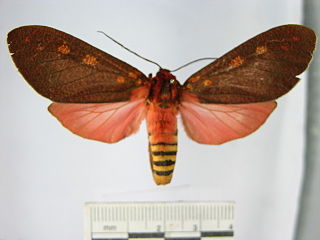
Jamaica is an island country situated in the Caribbean Sea. Spanning 10,990 square kilometres (4,240 sq mi) in area, it is the third-largest island of the Greater Antilles and the fourth-largest island country in the Caribbean. Jamaica lies about 145 kilometres (90 mi) south of Cuba, and 191 kilometres (119 mi) west of Hispaniola.
Dub is a genre of electronic music that grew out of reggae in the 1960s, and is commonly considered a subgenre, though it has developed to extend beyond the scope of reggae. Music in this genre consists predominantly of instrumental remixes of existing recordings and is achieved by significantly manipulating and reshaping the recordings, usually by removing the vocals from an existing music piece, and emphasizing the drum and bass parts. Other techniques include dynamically adding extensive echo, reverb, panoramic delay, and occasional dubbing of vocal or instrumental snippets from the original version or other works. It was an early form of popular electronic music. The Roland Space Echo was widely used by dub producers in the 1970s to produce echo and delay effects.
Dancehall is a genre of Jamaican popular music that originated in the late 1970s. Initially, dancehall was a more sparse version of reggae than the roots style, which had dominated much of the 1970s. In the mid-1980s, digital instrumentation became more prevalent, changing the sound considerably, with digital dancehall becoming increasingly characterized by faster rhythms. Key elements of dancehall music include its extensive use of Jamaican Patois rather than Jamaican standard English and a focus on the track instrumentals.
In Jamaican popular culture, a sound system is a group of disc jockeys, engineers and MCs playing ska, rocksteady or reggae music. The sound system is an important part of Jamaican culture and history.

The erebid moth Ascalapha odorata, commonly known as the black witch moth, is a large bat-shaped, dark-colored nocturnal moth, found from Brazil to the southern United States. It is the largest noctuid found in the continental United States. In the folklore of many cultures in Latin America and the Caribbean, it is associated with death or misfortune.

The Dalceridae are a small family of zygaenoid moths with some 80 known species encompassing about one dozen genera mostly found in the Neotropical region with a few reaching the far south of the Nearctic region.

Sparagmia is a monotypic moth genus of the family Crambidae described by Achille Guenée in 1854. Its only species, Sparagmia gonoptera, described by Pierre André Latreille in 1828, is found in Central and South America and in the Antilles. Records include Argentina, Brazil, Panama, Costa Rica, Puerto Rico, Cuba and Jamaica.
Crocidomera turbidella is a species of snout moth in the genus Crocidomera. It was described by Zeller in 1848. It is found in Cuba, Jamaica and Mexico.

Synchlora ephippiaria is a moth of the family Geometridae. It is found on Jamaica and in Peru.

Elysius cingulata is a moth of the family Erebidae. It is found on Jamaica and in South America, including Brazil, Paraguay and Argentina.
Macalla phaeobasalis is a species of snout moth in the genus Macalla. It was described by George Hampson in 1916 and is known from Cuba, Jamaica and Florida.
Trischistognatha pyrenealis is a moth in the family Crambidae. It was described by Francis Walker in 1859. It is found in Mexico, Central America, the West Indies and the southeastern United States, where it has been recorded from Georgia to Florida and from Alabama to Texas.
Glaphyria bilinealis is a moth in the family Crambidae. It is found in Cuba, Jamaica, Puerto Rico and on the Virgin Islands.
Pyrausta carnifex is a moth in the family Crambidae. It was described by Cajetan von Felder, Rudolf Felder and Alois Friedrich Rogenhofer in 1875. It is found on Hispaniola, Jamaica and the Virgin Islands.
Bicilia olivia is a moth in the family Crambidae. It was described by Arthur Gardiner Butler in 1878. It is found on Jamaica.

Desmia ufeus is a moth in the family Crambidae. It was described by Pieter Cramer in 1777. It is found in Suriname, French Guiana, Costa Rica, Mexico, the Dominican Republic, Puerto Rico, Jamaica, Cuba and Florida.
Eulepte inguinalis is a moth in the family Crambidae. It was described by Achille Guenée in 1854. It is found in Brazil, French Guiana and in Jamaica, Cuba and Puerto Rico.
Microphysetica hermeasalis is a moth from the family Crambidae. The moth was discovered by Francis Walker in 1859, and it is found in Venezuela, Mexico, Central America, the Antilles and Florida. Its wingspan is 9–10 mm. Adults are on wing from March to June and from November to December in Florida.
Syllepis marialis is a moth in the family Crambidae. It was described by Poey in 1832. It is found in Cuba, Jamaica, Puerto Rico, the Bahamas and Costa Rica.








